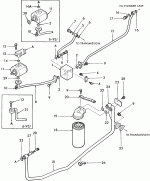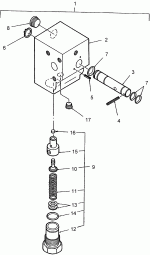Just because your pump won't self prime doesn't mean it's worn out or worn beyond specs.
In order to self prime, this pump would have to pull the oil about a foot uphill, then suck ALL the air out of the new filter you just installed, then suck ALL the air out of the suction line from the filter to the pump. All the air this pump is sucking has to go somewhere. There's a priority valve between the pump and the next valve in the pressure line. A hydraulic pump can't pump air nearly as efficiently as it pumps oil so it can't push all this air through the priority valve and thus .... gets airlocked. Again, this doesn't necessarily mean your pump is worn out or worn beyond specs.
I agree that trying to rebuild the hydraulic pumps on these tractors is a waste of money, especially when a brand new one is only $300.00
Mark



